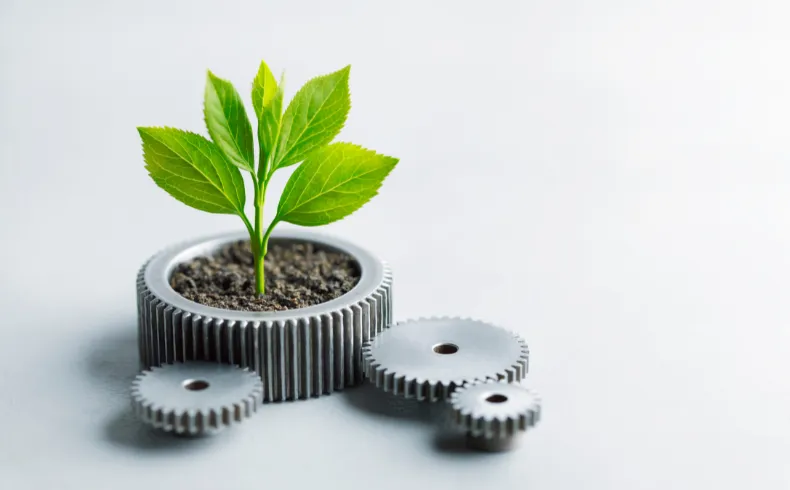Manufacturing long burdened the environment, shouldering approximately one-fifth of greenhouse gases. Yet demands grow for industry supervision and responsibility with sustainable manufacturing.
Sustainable making, prioritizing ecological guardianship and careful resource use, transitions from mere mention toward necessity as clients and watchdogs expect betterment.
In a world where natural assets are limited and climate change damages mount clearly, sustainable practices uphold not just a virtue but viability for enterprises seeking enduring success.
By minimizing clutter, lessening energy devouring, and nurturing accountable procurement, companies may unlock savings, enhance repute, and outfit their workings for eco-alert prospective customers.
None is better alone – together lifts through cooperation and enlightenment continuously serving to change anticipations.
Unstopping modernizing upgrades benefits communities and planes through obstacles undoubtedly lying ahead overcome as one. Our united comprehension champions sustainableness for all.
What is Sustainable Manufacturing?
Sustainable output promotes ecological awareness infiltrating manufacturing entirety.
Core to it – vitality efficiency, clutter paring, and carefully preserving assets. Plans involve product lines optimized for lower electricity voraciousness, renewable incorporations, and vigilant energy management.
Clutter minimization and recycling centers around lean production logic, less waste birthing, and potent recycling systems.
Conscientious supplying demands reliable origins evaluations and collaborative guardianship ensuring honest, eco-conscious actions along whole chains.
Businesses unlock savings through diminished usage and throwaway directions, a client-attracting differentiation, and an enhanced name as civic-minding. Our joined efforts upgrade enterprises assisting communities enduringly by optimization sources serving various interests.
None travel alone amid evolving calls – together lifts through cooperation and betterment constantly. Progress arises from shared accountability through steadily improving and serving people’s developing anticipations.
Strategies for Sustainable Manufacturing
Energy Efficiency Initiatives Achieving energy efficiency is a cornerstone of sustainable manufacturing.
Businesses can take several steps to reduce their energy consumption, such as investing in energy-efficient equipment, implementing energy management systems, and exploring renewable energy sources like solar, wind, or biomass.
For example, Toyota’s manufacturing facilities in North America have implemented numerous energy-saving initiatives, including installing LED lighting, optimizing HVAC systems, and utilizing renewable energy sources.
These efforts have resulted in a remarkable 22% reduction in CO2 emissions in the last 5 years 2017-2022.
Waste Minimization and Recycling Minimizing
Waste and promoting recycling are critical components of sustainable manufacturing.
Embracing lean manufacturing principles, such as value stream mapping and continuous improvement, can help identify and eliminate waste sources.
Implementing effective recycling programs for materials like plastics, metals, and paper can significantly reduce a company’s environmental footprint.
Sustainable Supply Chain Management
A sustainable manufacturing strategy extends beyond a company’s operations to include its entire supply chain.
Businesses should evaluate their suppliers based on environmental, social, and governance (ESG) criteria and collaborate with them to promote responsible practices.
This could involve sourcing materials from certified sustainable sources, optimizing transportation routes to reduce emissions, and encouraging suppliers to adopt eco-friendly practices.
Examples and Case Studies
Companies across various industries are leading the way in sustainable manufacturing, demonstrating the feasibility and benefits of adopting these practices. Whether it’s a drink manufacturer innovating with eco-friendly formulations or a global brand like Unilever setting targets to become carbon-positive by 2030 and halve its environmental impact by 2025, the industry is moving toward a greener future.
Unilever, a global consumer goods company, has set ambitious targets to become carbon-positive by 2030 and halve its environmental impact by 2025.
Through initiatives such as using renewable energy sources, implementing water recycling systems, and optimizing logistics, Unilever plans a 30.3% absolute reduction in Scope 3 forest, land, and agriculture GHG emissions (vs 2021)
In the automotive sector, BMW’s commitment to sustainable manufacturing has led to the development of innovative solutions like renewable materials, such as natural fibers and recycled plastics, and in-vehicle components.
Additionally, BMW’s Spartanburg plant in South Carolina plans to reduce CO2 emissions per vehicle by 40% from 2019 levels by 2030 across the spectrum.
These examples illustrate the tangible impact of sustainable manufacturing practices, not only in reducing environmental harm but also in driving operational efficiencies and cost savings.
Additional Information
As the world transitions towards a more sustainable future, emerging trends and technologies are shaping the landscape of sustainable manufacturing.
The circular economy model, which focuses on designing products for longevity, reusability, and recyclability, is gaining traction.
Companies are exploring additive manufacturing (3D printing) techniques that reduce material waste and enable on-demand production, minimizing inventory and transportation needs.
Furthermore, the integration of digital technologies, such as digital twins and advanced data analytics, enables manufacturers to optimize processes, predict maintenance needs, and identify areas for improvement in real time, further enhancing resource efficiency and minimizing waste.
Government regulations and incentives are also playing a crucial role in promoting sustainable manufacturing practices. Initiatives like carbon pricing, extended producer responsibility laws, and tax credits for green investments are incentivizing businesses to prioritize environmental sustainability.
Conclusion
Sustainable making comprises greater than trends but a necessity for endurance amid evolving planetary caretaking.
By embracing vitality efficiency, waste shrinking and dutiful supplying governing, enterprises may mitigate environmental effects, unleash cost-savings, and gain client-luring benefits.
The instances presented prove sustainability’s feasibility and advantages regarding ventures and Earth.
As urges grow demanding eco offerings, prioritizing sustainable manufacturing prepares companies for tomorrow.
Responsibility serves thriving resiliently unto descendants – necessity, not extravagance in a shared habitat. None maneuver solitarily; together uplifts by cooperation amid impediments undoubtedly lying ahead as one. Progress follows mutual accountability’s paths.
By cooperation’s persistent bettering through joint comprehension guiding technology advancements, accessibility rises for communities. Our unified front champions sustainability through obstacles while stewarding means serving all interests for posterity.



